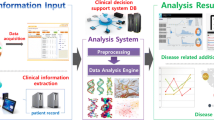Abstract
Due to the enhancing of life quality, increasing of chronic diseases, changing lifestyles, and an expanding life expectancy, rapid population aging requires a new business model that promotes happiness and emphasizes a healthy body and mind through the “anytime, anywhere well-being” lifestyle. Recently, lifecare systems using IoT devices are being released as products that are influential on the overall society, and their effectiveness is continuously proven. In addition, based on peer-to-peer (P2P) networking, diverse companies are conducting investments and research to develop devices as well as solutions that connect to these devices. Accordingly, in this study, a mining-based lifecare-recommendation method using a peer-to-peer dataset and adaptive decision feedback is proposed. In addition to collecting PHRs, the proposed method measures life-logs such as dietary life, life pattern, sleep pattern, life behavior, and job career; the P2P-dataset preprocessed index information; and biometric information using a wearable device. It uses the Open API to collect the health-weather and life-weather index data from public data, and it uses a smart-band-type wearable device known as a biosensor to measure the heart rate, daily activity, and body temperature. It monitors the current status and conditions through the classification of life data, and it mines big data and uses a decision tree to analyze the association rules and correlations, as well as to discover new knowledge patterns. In the peer-to-peer networking, a lifecare recommendation model that uses adaptive decision feedback has been developed for the peer-to-peer platform. This adaptive decision feedback reflects an individual’s importance or sensory level. Accordingly, it proposes more individualized and flexible results and can be configured to support intellectual lifecare. A mining-based lifecare-recommendation mobile service can also be developed to enhance the quality of life, as it provides user-based health management and reduces the medical expenses; accordingly, it enhances the service satisfaction and quality in the lifecare field.






Similar content being viewed by others
References
Health Insurance Review and Assessment Service (HIRA). http://opendata.hira.or.kr /
Kim JC, Jung H, Yoo H, Kim JH, Chung K (2017) Medical mining based silver smart platform for elderly health. Proc. of the 4th international conference for small & medium business 2017, pp 356–357
Chung K, Park RC (2016) PHR open platform based smart health service using distributed object group framework. Clust Comput 19(1):505–517
Jung H, Chung K (2016) P2P context awareness based sensibility design recommendation using color and bio-signal analysis. Peer-to-Peer Netw Appl 9(3):546–557
Jung H, Yoo H, Chung K (2016) Associative context mining for ontology-driven hidden knowledge discovery. Clust Comput 19(4):2261–2271
Kim JC, Yoo H, Kang MA, Ghose S, Chung K (2017) Big lifelog-based management using similarity for health platform. Proc. of the 7th International Conference on Convergence Technology 2017, pp 627–628
Jung EJ, Kim JC, Jung H, Yoo H, Chung K (2017) Mining based mental health and blood pressure management service for smart health. J Korea Converg Soc 8(1):13–18
Chung K, Park RC (2016) P2P cloud network services for IoT based disaster situations information. Peer-to-Peer Netw Appl 9(3):566–577
Care Innovations, LLC. http://www.careinnovations.com/quietcare/
HanVit MD. http://ivic.koreasme.com /
HanDok Co, http://www.handok.co.kr
American Heart Association Inc. http://www.heart.org /
Fitbit. http://www.fitbit.com/home/
Song CW, Jung H, Chung K (2017) Development of a medical big-data mining process using topic modeling. Clust Comput. https://doi.org/10.1007/s10586-017-0942-0
U.S. National Weather Service (NWS). http://www.weather.gov /
International Business Machines Co. http://www.ibm.com/watson/
Google inc. http://www.google.org/flutrends/
National Information Society Agency. http://www.data.go.kr /
Korea Meteorological Administration. http://web.kma.go.kr/eng/
Chung KY (2011) Vital signal monitoring simulation system by various visual stimulus. J Korea Contents Assoc 11(1):1–8
Rho MJ, Kim HS, Chung K, Choi IY (2015) Factors influencing the acceptance of telemedicine for diabetes management. Clust Comput 18(1):321–331
Kim SH, Chung K (2016) Emergency situation monitoring service using context motion tracking of chronic disease patients. Clust Comput 18(2):747–759
Chung K, Na Y, Lee JH (2013) Interactive design recommendation using sensor based smart wear and weather WebBot. Wirel Pers Commun 73(2):243–256
Chung K, Kim JC, Park RC (2016) Knowledge-based health service considering user convenience using hybrid Wi-fi P2P. Inf Technol Manag 17(1):67–80
Jun IJ, Chung KY (2009) Life weather index monitoring system using wearable based smart cap. J Korea Contents Assoc 9(12):477–484
Jung H, Chung KY, Lee YH (2015) Decision supporting method for chronic disease patients based on mining frequent pattern. Multimed Tools Appl 74(20):8979–8991
Jung H, Chung K (2016) PHR based life health index mobile service using decision support model. Wirel Pers Commun 86(1):315–332
Yoo H, Chung K (2017) PHR based diabetes index service model using life behavior analysis. Wirel Pers Commun 93(1):161–174
Jung H, Chung K (2015) Sequential pattern profiling based bio-detection for smart health service. Clust Comput 18(1):209–219
McCue C (2014) Data mining and predictive analysis: intelligence gathering and crime analysis, 2nd edn. Elsevier, Amsterdam
Health Level Seven. http://www.hl7.org/implement/standards/
Oh SY, Chung K, Han JS (2016) Towards ubiquitous health with convergence. Int J Technol Health Care 24(3):411–413
Acknowledgements
This research was supported by Basic Science Research Program through the National Research Foundation of Korea (NRF) funded by the Ministry of Education (NRF-2016R1D1A1A09917313).
Author information
Authors and Affiliations
Corresponding author
Additional information
This article is part of the Topical Collection: Special Issue on Convergence P2P Cloud Computing
Guest Editor: Jung-Soo Han
Rights and permissions
About this article
Cite this article
Yoo, H., Chung, K. Mining-based lifecare recommendation using peer-to-peer dataset and adaptive decision feedback. Peer-to-Peer Netw. Appl. 11, 1309–1320 (2018). https://doi.org/10.1007/s12083-017-0620-2
Received:
Accepted:
Published:
Issue Date:
DOI: https://doi.org/10.1007/s12083-017-0620-2




